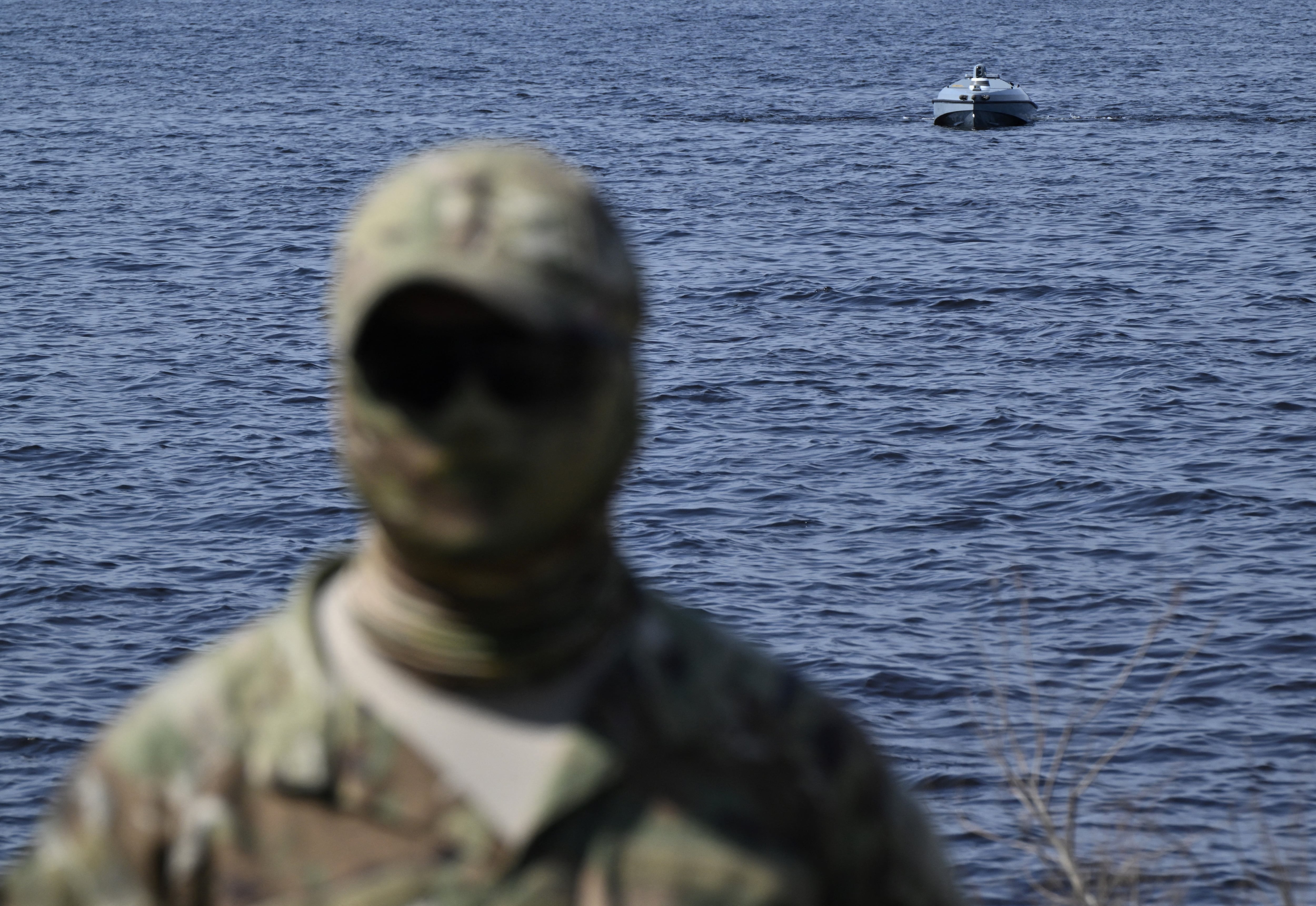The Army is pushing defense companies that specialize in robotics for software that will work across all platforms.
“If you have a unit that has different classes of robots ... you want to be able to control them all with one controller,” said Mads Schmidt, director of unmanned systems for QinetiQ.
QinetiQ fields a compact robot called Dragon Runner to dismounted Marine units for bomb disposal missions, Schmidt said. However, units across the services all buy robots from different companies and with different controllers, he added.
“Right now, throughout the industry, every robot comes with its own controller. From a training perspective, from a logistics perspective, and from a cost perspective, it‘s really onerous to have multiple systems out there,” Schmidt said. “For the soldiers using these things, it’s a big problem.”
For the past few years, QinetiQ has been working on a universal controller, called a Tactical Robot Controller, to solve that problem, he said.
“It‘s part of a larger effort by the government to get common control of all the robots at the same time,” he said.
Over the summer, QinetiQ ran a demonstration for the Army in which the universal controller was able to control a Raven unmanned aerial vehicle, a Talon-class robot and ground sensors, said Jun Yu, the technical program manager for QinetiQ.
“In that demonstration, we had overwatch by the Raven, and then we could take control of whichever vehicle we wanted from this controller,” Schmidt said. “So this is really driving towards a single controller for everything.”
The ability to control multiple robotic platforms from a single controller is something the Army has been working on for the past decade but only recently managed to achieve with the development of the Interoperability Profile, Schmidt said. The IOP is a common architecture for unmanned ground vehicles that increases compatibility between software, he added.
“There‘s actually a lot of industry buy-in to this,” Schmidt said.
Adapting to the Army’s vision of a universal controller for all unmanned vehicles is something everyone in the industry is oriented towards, said Paul Bosscher, chief engineer of robotic systems at Harris.
“We‘re developing all of our systems to be compatible with that architecture, both for capability today and future-proofing tomorrow’s additional payloads, sensors or capabilities,” Bosscher said. “That’s the Army’s vision for this ... a universal controller that’s compatible with ground systems and aerial systems of all scales and sizes.”
Moving in that direction will reduce the amount of hardware needed in the field and simplify training, Bosscher said.
However, as robotic systems move toward using the same IOP, there are some increased security challenges that have to be dealt with, Schmidt said.
“You always have to be careful, but the government is requiring a very high level of security,” Schmidt said. “It‘s something they’re hyper-vigilant of, and a lot of the testing that goes on with these systems is cyber security centered.”
For example, the radios used to control QinetiQ’s universal controller are all encrypted up to NSA requirements, Schmidt said.
“As the common control systems come online, we as an industry and the government ... have to figure out how to address all security concerns,” Schmidt said. “We‘re confidant all the technology is there to do it, but with everything we’re seeing going on right now, you can’t be too careful.”
Kyle Rempfer was an editor and reporter who has covered combat operations, criminal cases, foreign military assistance and training accidents. Before entering journalism, Kyle served in U.S. Air Force Special Tactics and deployed in 2014 to Paktika Province, Afghanistan, and Baghdad, Iraq.








